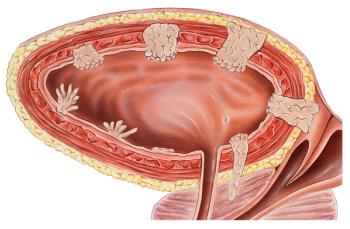
Sorafenib as Effective, Safe in Elderly RCC Patients as in Younger Ones
PFS, tumor response, and safety outcomes were similar in patient cohorts under age 75 vs those 75 years of age and older.
Renal cell carcinoma (RCC) patients 75 years of age and older who were treated with the tyrosine kinase inhibitor sorafenib had efficacy and safety outcomes similar to those seen in a younger patient population, and they did not experience reduced renal function, according to the results of a Japanese
The average age at diagnosis of RCC is increasing, according to the study, and many elderly patients diagnosed with RCC also have comorbidities such as hypertension, cardiovascular disease, or diabetes, making them ineligible for clinical trials.
For these reasons, Katsunori Tatsugami, of Kyushu University, Japan, and colleagues wanted to evaluate the safety and efficacy of the targeted agent sorafenib in a real-world setting that included patients who might be excluded from a clinical trial.
Tatsugami et al collected data on 2,536 patients younger than 75, and on 703 patients aged 75 years and older. All patients had been diagnosed with advanced RCC, and 397 matched pairs were evaluated. The investigators looked at patient characteristics, dose modification, adverse events, tumor response, progression-free survival (PFS), and renal function.
The median daily dose of sorafenib was significantly lower in the younger patients compared with the older group (538.5 mg vs 422.3 mg; P < .0001). This lower dose “might reflect the higher numbers of those [older study enrollees] with low body weight and reduced renal function,” the researchers wrote.
The duration of treatment was also longer in patients younger than 75 years of age (7.6 months vs 5.6 months in the younger group). However, a similar number of patients in each group required dose reduction or modification. Patients 75 and older had a higher rate of treatment discontinuation due to adverse events (AEs) compared with their younger counterparts (75.3% vs 63.7%; P = .0015).
PFS and tumor response were similar between the two age groups. The median PFS in younger patients was 217 days compared with 219 days in the group of patients aged 75 and older.
Notably, the incidence of AEs was not significantly different between the two age groups. The most common AEs in younger patients were hypertension (33.3% vs 37.3%) and decreased appetite (6.6% vs 12.9%). Alopecia, hepatic dysfunction, and hypophosphatemia were also more common in the younger patients.
The authors cautioned that the study is limited by its nonrandomized, retrospective nature. They also reminded clinicians that, because this study “was based entirely on data derived from a Japanese population…the results are not necessarily applicable to non-Japanese patients.”
Newsletter
Stay up to date on recent advances in the multidisciplinary approach to cancer.

























































































